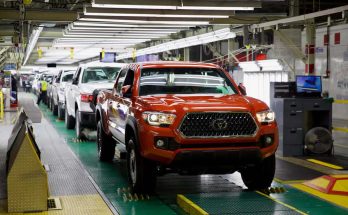By Elenne Castro
Supply risks have increased, not only due to higher inflation, but also because of economic tensions between China and the US. There are also the problems caused by the pandemic and the conflict between Russia and Ukraine. Nearshoring is beginning to gain strength as the solution to risks and cost overruns in supply chains. According to information from the US Census Bureau, US exports to Mexico to June of this year were over US$40.3 billion, and imports were US$30 billion.
Faced with logistics problems, organizations are adopting a trend in regard to their manufacturing, assembly, or supply processes to move them closer to the parent company. This reduces the risk of operational interruptions and dependence on countries like China. Rafael Vásquez, regional vice president of Value Services Coupa (provides specialized resources to manage Risk Assess application for multiple risk domains, multiple regulators, and complex relationships with suppliers and third-parties), commented that it is projected that the greatest opportunities for the relocation of companies is in the automotive sector. According to data from the Mexican Association of Private Industrial Parks, 25 industrial parks are expected to open in Mexico in the next 12 months, representing an investment of US$25 billion. This opens a great window of opportunity for national companies.
T-MEC is the trade agreement between Mexico and the US. It offers attractive tariff benefits for companies from both countries. The Inter-American Development Bank (IDB) estimates that the relocation of manufacturing centers represents a US$35 billion opportunity in new exports for Mexico. In addition, Mexico has competitive advantages that make it attractive for commercial exchange, particularly its geographic proximity to the US. This factor has not been overlooked by North American importers, who have already begun to look for suppliers here. Further, the cost of labor in Mexico is low compared to the cost in the places of origin of big brands, and in the main world markets, and represents a significant reduction in operational terms.
Technology: What is needed
As nearshoring becomes more important, companies that want to take advantage of this trend must be prepared with the technology and software to face the challenge of serving the US market. How to do it? Digital tools are needed that can unify supply chain design and planning processes, such as purchasing, payments, and financing in a single, cloud-based enterprise spend platform.
The creation of distribution models continues to be a factor that will define the success or failure of a supply chain, which is why it is important to rely on simulators that analyze different variables to identify the best route for transporting merchandise. “The more and better you plan and execute your delivery routes, the more you will gain the trust of your customers and achieve savings on fuel, vehicle usage, and other expenses related to the operation of your distribution fleet,” Vásquez said
Nothing is complete without the human factor. Therefore, it is essential to also invest in updated and constant employee training. The better their training, the better results they will obtain from the available technological tools.
Technology and the human factor will help maximize the opportunities to be part of an efficient relocation of companies’ manufacturing centers. With all this, nearshoring is viewed as an opportunity for companies and Mexico’s economy in the coming years.
*This excerpt is published by authorization of Mexico Industry, to keep reading please visit the link: https://mexicoindustry.com/noticia/ventajas-del-nearshoring-en-mexico-al-ser-vecino-de-estados-unidos




